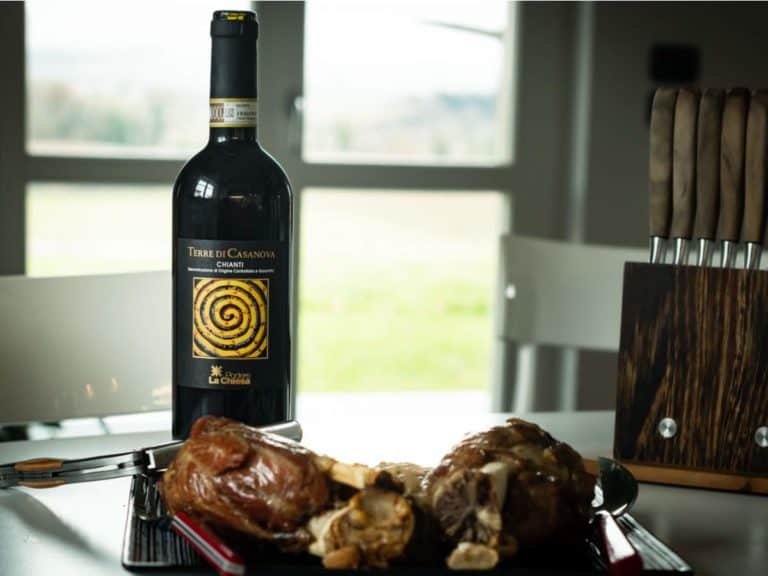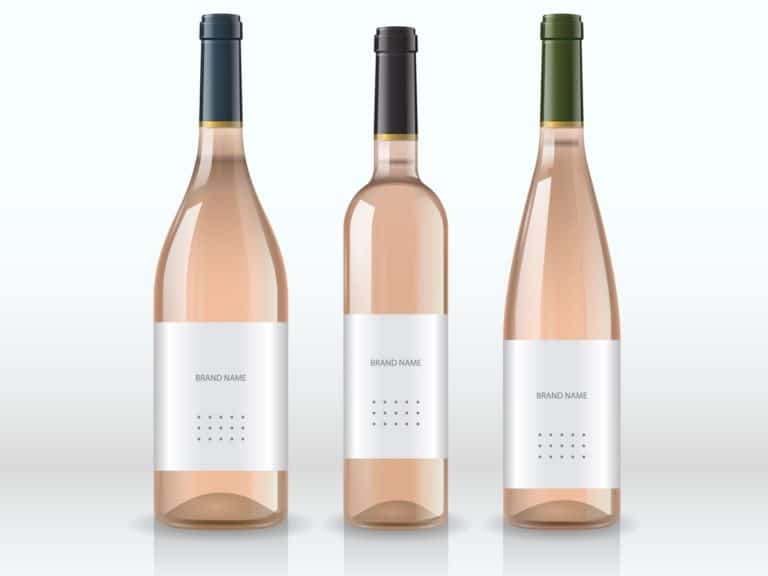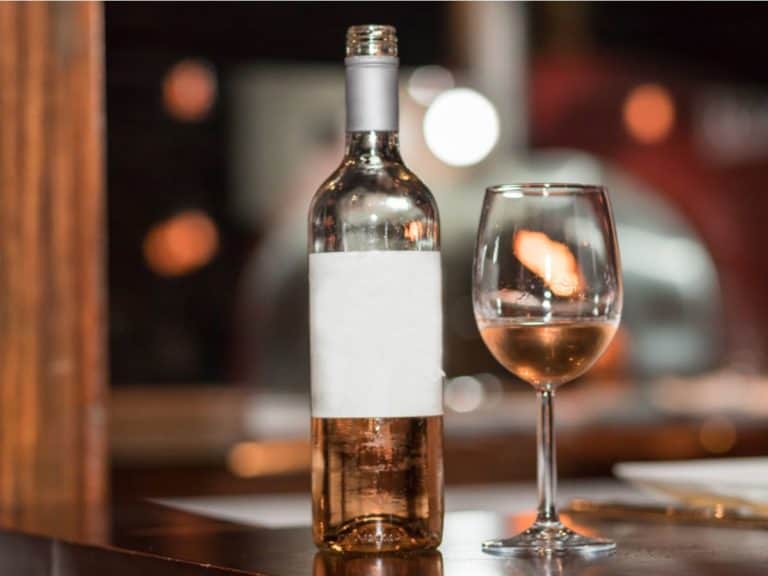Is Rosé Wine or Champagne? Ultimate Guide
Rosé wine and champagne have some similarities to them that might make it hard to choose between them. There are at least seven types of wine and six types of champagne to choose from. When making choices, there are likely to be several questions that come to mind, particularly whether rosé is wine or champagne.
Rosé is an alcoholic beverage that can be classified as rosé wine or rosé champagne. While the names are similar, they are both distinctive beverages. The most notable difference is thatrosé champagne undergoes fermentation which makes it sparkle.
Read on to learn more about how rosé wine and rosé champagne are made and how to choose the best quality bottles.
Rosé Wine vs.Rosé Champagne
What is Rosé Wine?
It is essential to know what rosé is when you are determining whether it is wine or champagne. Rosé is a type of wine that is made similarly to red wines.
However, when the rosé is made, the grape skins are left in the liquid for a shortened amount of time. Because of this, the wine is given the signature rosé coloring.
Unlike most wines, Rosé can be made with a blend of several different types of grapes, and you can find it worldwide. It is a popular choice because of its light taste, unlike the heavier reds.
Most people enjoy rosé on hot summer days, but it can be appreciated anytime. When choosing a rosé, you will find a variety of flavor profiles.
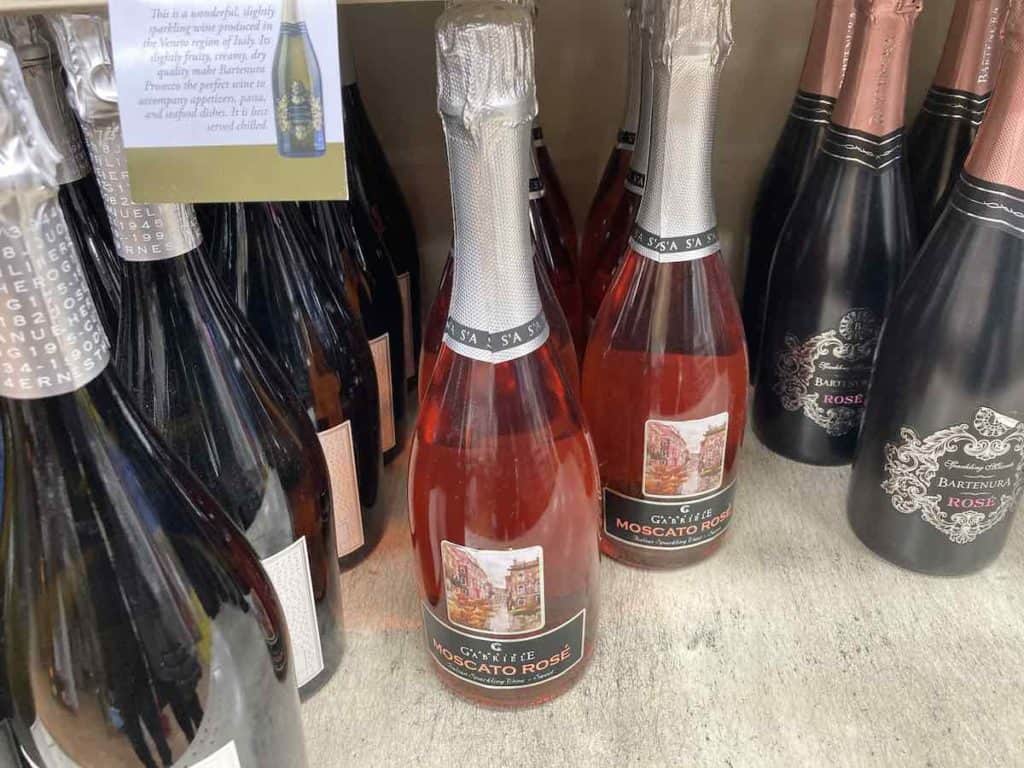
What is Rosé Champagne?
Rosé champagne is much different than rosé wine. Champagne is characterized by the carbonation that is added to the beverage. Often, champagne is referred to as “bubbly” for this reason. Rosé champagne can be made with two different processes.
- Blending: The most popular method of creating rosé champagne involves mixing fermented red and white grapes. The mixture of the two presents a lovely shade of pink that can be adjusted with the added amount of red.
- Rosé De Saignée: Red grape skins are added to white fermented wine to create rosé champagne with this method. The skins are allowed to soak until the desired level of pink is reached.
Both methods of creating rosé champagne are acceptable and widely used.
Why is Rosé Champagne More Expensive Than Regular Champagne?
Champagne is more expensive than wine because of the process needed to produce it. The added steps necessary to make the lovely shade of pink in rosé champagne cause it to be more expensive.
Rosé champagne can be made using two different methods. The methods are called:
- Maceration: The process of maceration involves placing red grape skins into the champagne until the proper color is achieved for the rosé champagne. This process is not used frequently because it can take up to 72 hours to achieve results.
- Blending: The most common way rosé champagne is made by blending red and white wine together until the proper color is achieved. This is often the most widely used method because it is quick and easy to produce large quantities.
Now you know the differences between rosé wine and rosé champagne.
Choosing Rosé Wine
When it comes to choosing the best rosé to pair with food, you will want to understand the dryness of each type as well as the flavor profile. The dry nature of rosé dates back to its initial production in France during colonial times.
There are several types of rosé wine that you can enjoy; some are dry while others are sweet. Depending on what you choose to serve with the wine, you will want to choose accordingly.
Related Article: How to Buy Rosé Wine
Travel Grenache
This wine is typically made with the most popular grapes in Spain. It is preferred because of its fruity, floral, and earthy flavor profile. It is extremely dry, so it is best paired with meats and other hearty dishes.
It is essential to know this wine is often described as bone dry.
Cabernet Sauvignon
The profile of this wine is dry with a hint of acidity. The flavor profile is often described as fruity and floral. This wine will likely pair best with salty foods and appetizers.
Pinot Noir
This rosé is another dry option that has a fruity profile with hints of strawberry, orange, and lemon. This wine is best paired with seafood and foods generously flavored with herbs. Because of the low sugar content, you won’t notice a very sweet flavor. (Source: Pacific Rim and Co)
Sangiovese
This rosé is dry but cannot be described as bone dry. It is appreciated for the fruity profile it delivers. It is best to pair this wine with grilled foods, but it is likely to be enjoyed with most foods.
If dry rosé options aren’t what you are looking for, there are several sweet profiles that may be more suitable.
Sparkling Rosé Montepulciano
This wine has a slightly sweet profile and is not nearly as dry as other rosé options. It is preferred for the hints of cinnamon and orange.
Depending on the food you pair it with, you may notice additional hints of spice. The best food to enjoy this rosé with is salty and tomato sauces.
Pink Moscato
This is the sweetest rosé option you will find. The flavor profile is fruity and sweet. You will find the best food to pair this wine with is anything spicy, but it can also complement a variety of other flavors, depending on your palate preferences.
As you can see, when it comes to rosé wines, the options are vast and suit a variety of flavor profiles.
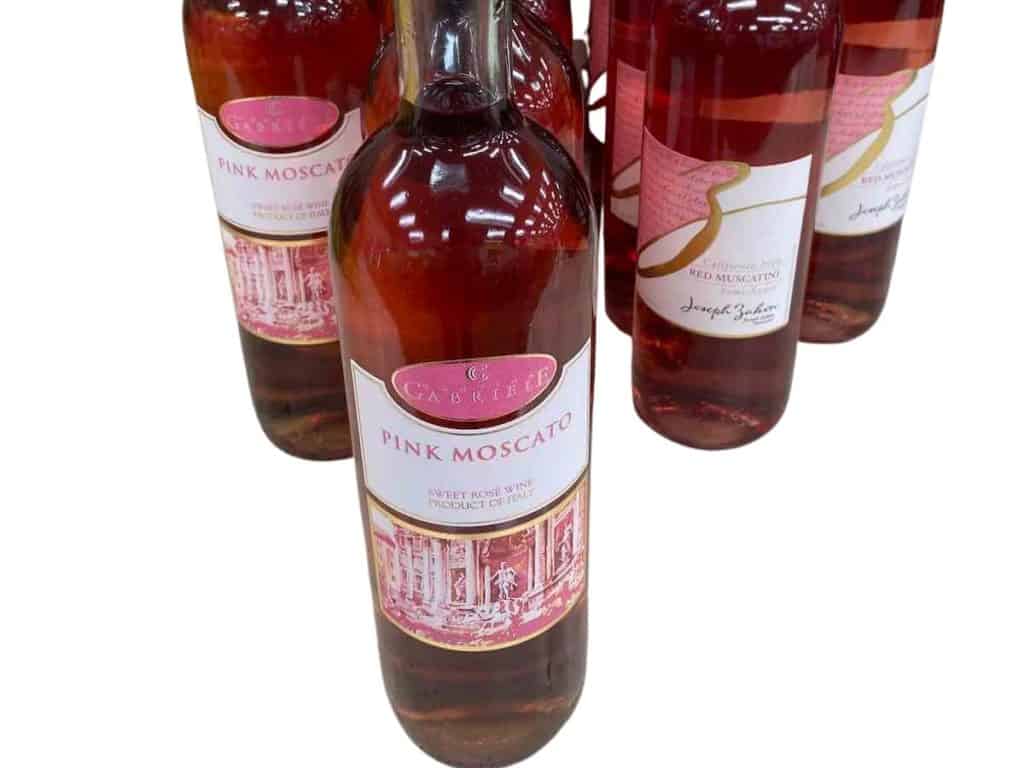
Rosé Wine Alcohol Content
Typically, red wines have a higher alcohol content than white wines. Because Rosé is a combination of red and white wine, the alcohol content falls in between the high and low levels at 12% per glass.
Best Way to Serve Rosé Wine
It would be best if you were very careful when it comes to serving wine because there are different preparations that need to be made.
Rosé wine is no exception.
While there is some degree of personal preference when it comes to serving wine, there are also some things that you should do to make sure you are getting the best glass of wine possible.
Chilled
Not many people enjoy drinking warm wine. The best way to serve rosé wine is to make sure it is appropriately chilled. The recommended temperature is between fifty and fifty-six degrees. The wine will leave a pleasant feel in the mouth at this temperature.
How to Chill Rosé Wine?
You may wonder how to chill wine properly to reach the correct serving temperature. There are many different ways to chill wine. Some of the most popular are:
- Refrigerator: If you use your standard refrigerator to chill wine, you will want to remove the bottle several minutes before serving. This will allow the wine to warm to the proper temperature.
- Wine refrigerator: You may have a dedicated wine fridge if you enjoy wine frequently. The good thing about a wine fridge is the ability to set a specific storage temperature. If you are able to do this, you can serve the wine as soon as you remove it from the cooler.
Perhaps you are in a position where you are unexpectedly entertaining and have no chilled wine. In this case, there are ways to chill your wine to serving temperature quickly. Not all wines can be rapidly chilled the same way. Here are some techniques to quickly chill rosé wine.
- Ice bath: You can submerge the bottle of wine in an ice bath with ice, water, and salt. This will allow the temperature of the wine to drop rapidly without freezing. Remember, rosé wine does not need to be served ice cold, so you will need to be observant if you use this method.
- Frozen grapes: NEVER put ice cubes into your wine because it will become watered down and lose its flavor profile. A solution to chill your wine without ice is to use frozen grapes. They can quickly be dropped into the glass. Instead of melting, the grapes will thaw and not change the flavor of the wine in the least.
- Freezer: You can use a freezer to chill your wine rapidly in a pinch. It is best to wrap the bottle with a towel before putting it into the freezer and keep a close eye on it, so it doesn’t become too cold.
These are all options to rapidly cool rosé wine without harming the flavor, but the best method is to plan ahead and slowly chill the wine to the desired temperature.
Proper Glass
To serve the rosé and get the full taste of the wine, it is vital that you use a proper glass. While not necessary, it will enhance your experience.
It is recommended that the rosé be served in a diamond-shaped glass. This shape allows the wine to keep the proper temperature and emits the aromatics of the wine. The glass will essentially engage the senses of the individual enjoying the wine.
Cork the Bottle
Once you have served all your guests, it is crucial that you place the cork back into the bottle. This will help preserve the freshness of the wine until you are ready to make the next pour.
Choosing Rosé Champagne
When deciding what food pairs best with rosé champagne, you will need to look at the flavor profile and body of the champagne. It is best to keep light champagne for appetizers and light fare, while more full-bodied champagne would go well with hearty meals.
Types of Rosé Champagne
There are a variety of rosé champagnes on the market. You will sometimes see the champagne referred to as pink champagne, denoting its elusive pink color. It is essential to know that pink champagne is much more expensive than traditional white champagne.
Almost all rosé champagne will have a crisp taste due to the carbonation. The most likely difference you will notice is the price between brands. The price is based on the wine that is used to make the champagne and where it was produced.
Rosé Champagne Alcohol Content
The alcohol content of Rosé Champagne is very similar to Rosé wine because of the way it is made. A glass of Rosé Champagne has an alcohol content of 13% per glass.
Although the alcohol content is not extremely high in Rosé Champagne, there is a chance it could have a quicker impact than wine because of the carbonation.
Best Way to Serve Rosé Champagne
It is essential that you serve rosé champagne properly so it can be thoroughly enjoyed. Remember, it can be pretty expensive, so you want to make sure you experience all it has to offer.
Chilled
To fully enjoy rosé champagne, you will need to make sure it is chilled to a temperature between 42 and 48 degrees. Serving champagne that is either over or under-chilled will lessen the flavor profile or sweetness.
Best Ways to Chill Rosé Champagne
You must chill champagne the proper way, or you could ruin the product. Just like wine, there are different ways to chill champagne.
- Ice bucket: The best way to chill champagne is in a bucket of ice. The entire process only takes about twenty minutes and leaves you with champagne at the perfect temperature.
- Refrigerator: You can always use a fridge to chill your champagne, but you may need to let it sit for a moment before you serve it.
Now, let’s see the worst way to chill Rosé champagne.
Worst Way to Chill Rosé Champagne
Champagne is a beverage that must never be quickly in a freezer. While the freezer will leave you with a cold bottle of champagne, it will also significantly reduce the carbonation of the champagne. Drinking champagne without carbonation will not give you the experience you are looking for.
Proper Glass
You have likely seen or experienced champagne served in tall, slender glasses. These glasses are called tulip glasses. They are recognized by the tapered top and wide belly of the glass. They are shaped this way to help you enjoy all aspects of the champagne.
The glass is specifically designed this way to provide the drinker with the ability to enjoy the scent of the champagne without sacrificing carbonation. The narrow top prevents carbonation from escaping quickly.
Final Thoughts
Rosé wine and rosé champagne are two different beverages that are enjoyed in different ways and should not be confused with one another. Rosé wine comes in both extremely dry and sweet varieties, while rosé champagne can be found in light and full-body versions.
No matter which you choose to enjoy, be sure to prepare and serve it properly to get the whole experience.
Read Also: How to Get Rose Wine Out of Clothes


